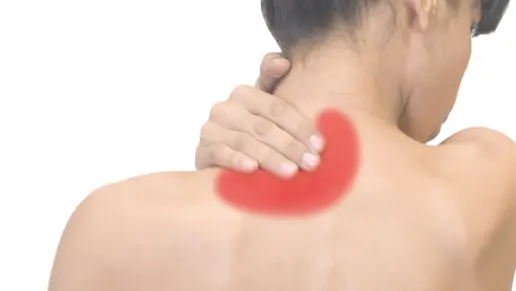What Is Morphine?
Morphine is a non-synthetic narcotic that is used to treat pain. It is derived from opium. It has a high potential for abuse due to its potency. On the street, it is commonly known as Dream, Emsel, First Line, God’s Drug, Hows, MS, Mister Blue, Morph, Morpho and Unkie. Morphine works by binding to receptors in the brain that are involved in pain perception.
Not only does it cause pain relief but it can also induce euphoria and deep relaxation by triggering a dopamine release in the brain. This can cause you to want to use more which can create a dependency or addiction.
Side Effects and Morphine Withdrawal Symptoms
You can become dependent on morphine no matter what dosage you take. In some cases, you can also develop a tolerance due to the impact that it has on your brain and body. When taking morphine, certain morphine side effects could occur.
Some of those common effects include constipation, feeling tired, confusion and headaches.
These common side effects happen in more than one in 100 people. In some cases, you might experience more serious problems like muscle stiffness or symptoms associated with low blood pressure but those effects are much less common. You can experience withdrawal symptoms if you stop taking morphine suddenly.
Withdrawal symptoms from morphine can range from mild to potentially life-threatening depending on the severity of your dependence and your health condition. The worse your withdrawal symptoms are then the higher the risk of relapse if you have an addiction.
Some common morphine withdrawal symptoms can include cravings, watery eyes, nausea/vomiting, diarrhea, body aches, headaches, chills, dilated pupils and fever. Withdrawal symptoms from short-acting morphine set in within six to 14 hours after taking the last dose.
Meanwhile, those from long-acting morphine usually begin within 12 to 24 hours after your last dose.
FAQs
How Long Does Morphine Stay in Your System?
The metabolites of morphine remain in the body even after a person no longer feels the drug’s effects. Blood tests for morphine show a negative result more quickly than other tests due to it reaching the peak blood concentration within one hour of use.
With urine, morphine will exit the body quickly. Depending on the size of the last dose, a person’s metabolism, how much water they consume and similar factors a urine sample is usually negative within 12 to 36 hours. Morphine can also stay in breast milk and a person’s hair.
Is Morphine an Opioid?
Opioids are a class of natural, semi-synthetic and synthetic drugs that include both prescription medications and illicit drugs. Morphine is considered a prescription opioid because it is used to treat pain.
Oxycodone, hydrocodone, codeine and fentanyl are other drugs in this specific category. Morphine is also considered a natural opioid due to it being made from seed pods of the opium poppy plant. These natural substances are also known as opiates.
How Long Does Morphine Last?
The effects of morphine depend on several factors which can include how the drug is administered, how much is taken and whether a tolerance has been built up or not.
For example, if someone uses the injectable form of morphine then it will usually relieve pain within five to 20 minutes with the peak pain relief being around 60 minutes. Injectable morphine will last for a total of three to four hours.
If you take the oral form of morphine then the pain relief peak is about 60 minutes, but the other side effects usually wear off within four to six hours.
Dilaudid vs. Morphine
Morphine and Dilaudid are both considered opioid analgesic drugs that treat severe pain. Dilaudid is also known as hydromorphone. In regard to potency, Dilaudid (the brand name for hydromorphone) is two to eight times more powerful than morphine but morphine’s effects last longer.
Even with their differences, both of these drugs work in similar ways. Both morphine and hydromorphone work by binding to opioid receptors in the nervous system and altering the way a person’s body reacts to pain. Both of these drugs are used for the same purpose but the biggest difference is the potency that comes with Dilaudid use.
Both of these drugs may interact negatively with other medications, drugs and herbal supplements. All of these interactions may produce dangerous side effects which can include severe withdrawal symptoms or the potential for an overdose.
Treatment Options for Morphine Addiction or Dependency
If you develop an addiction to morphine then there are treatment options. Morphine is an opioid so if you or someone you know essentially overdoses on this drug then you can use naloxone, also known as Narcan to reverse the effects of the overdose.
Detox
You can also get treatment in a detox setting to ensure you are going through the stages of withdrawal in a safe place. This way, you can begin recovery in a facility that’s monitored by medical staff around the clock.
Inpatient and Outpatient Treatment
Inpatient and outpatient treatment options can be an option when it comes to addressing an opioid use disorder. In an inpatient setting, you will have the opportunity to engage in group and individual therapy as well as drug education classes.
Outpatient therapy is set up similarly but it can provide a more individualized approach. Outpatient services can also include intensive outpatient services.
Medication Assisted Treatment
Medication assisted treatment is available as well. If this is the route of treatment you choose then you could be prescribed methadone, buprenorphine or naltrexone. In addition to these medications, you will also be involved in therapy services.
Other types of medication can be used too that will help with co-occurring disorders that can arise with having a substance use addiction or dependence.
Aftercare
Once you complete an inpatient or outpatient program then you could be set up with aftercare services. This can include continued therapeutic services, connection to local AA/NA meetings or connections within your local recovery community.
The Substance Abuse and Mental Health Services Administration (SAMHSA) offers a list of medication services and other treatment options for substance use disorders. It is important to talk with your specific provider or desired program to discuss what your specific needs are and what type of treatment is more appropriate for you.
You can also learn more about rehab options if you want to explore treatment centers near you.
Because opioid addiction treatment often involves detox, inpatient care, or medication assisted support, many people review their insurance benefits before choosing a program. You can learn more about rehab options to see how insurance may help cover different levels of care.
Addiction Centers That Treat Opioid Addiction
Finding facilities near you…





